- cross-posted to:
- imaginarytrains@lemm.ee
- cross-posted to:
- imaginarytrains@lemm.ee
One of my goals for my postcard series is to show a rebuilding society that prioritizes reducing waste and externalities, and examining what weird technologies might appeal to them because of those goals/limitations. So I’ve been wanting to do a scene of a caustic soda locomotive ever since I first heard about them.
Soda locomotives were a type of fireless steam locomotive that barely made it out of the prototype phase, where the boiler is surrounded by a tank of ‘caustic soda’ (usually one of several possible chemicals), which generates heat when mixed with water. The heat produces steam in the boiler, which is used to drive the pistons, but instead of being released, its condensed and added to the soda to create more heat. This goes on until the soda gets too dilute to produce more heat, but it can be ‘recharged’ by drying it out again.
These never really took off because it took more coal to dry the soda at the station than to just run a conventional steam locomotive, and electric trains quickly came into their own and filled the niche of quiet, low-pollution trains for inside cities and tunnels.
But I feel like these could pair well with solar steam generators (another late-1800’s design) stationed along the tracks, to create analogue, solar-powered trains. These could run on existing unpowered tracks, without requiring any new electrical infrastructure, just the isolated drying stations.
The train crew would just exchange wet soda for dry and start again (looks like that took about 45 minutes). The cool thing is that this arrangement could be asyncronous - the station can dry out the caustic soda, then store it for when the train shows up. The train can run on cloudy days or at night, as long as they get enough sunny days to dry out big batches of soda at the stops along the way. And the solar concentrators can be huge and optimized for their location because they don’t have to move.
The focus of these postcards isn’t on technological utopias so much as on societies that are reexamining how to do things as they rebuild, anachronistically combining all kinds of tech. So trains and solar concentrators built with 1800’s technology seem like an easier starting place.
The concentrators require fairly simple materials (mirrors or polished metal) and math to make (plus some simple mechanical timing or basic motors/electronics to get them to follow the sun without a human turning a crank).
Most of the descriptions I’ve seen of drying the caustic soda mention pumping superheated steam through the dilute mix from another (coal) boiler, so it seems like you could use almost any design from the earliest solar steam generators to something like these modern ones depending on the society’s manufacturing capabilities. The solar concentrator/boiler I referenced for the art is a design from 1901.
(The most common modern design for solar steam generation I’ve seen is that sort of mirrored-trough-and-vaccum-lined-tube system. I mostly went with the big round reflector because I was worried the trough design wouldn’t read as distinct from photovoltaic panels in this art style.)
The trains could run with minimal pollution using these simple technologies, and even if their range is lower, or they’re not as fast, that might be a trade off this society would accept.
Ideally they would use existing tracks and passenger or freight cars, and only need new infrastructure around whatever station fueled them up on their route (or at a destination). I think this applies to the compressed air locomotives just as well as the caustic soda ones.
(If you don’t like the idea of caustic soda locomotives, but you still want this idea to work, another option with a shorter range is compressed air locomotives. Instead of drying the soda, the station would be using a solar steam engine or windmill or water wheel to run an air compressor, steadily filling a tank which would be used to top up locomotives on their route. This would still allow for isolated infrastructure to power a train along unpowered rails. IRL these mostly saw use in mines.)
The locomotive in the scene is based on a real-life fireless locomotive. They’re similar, but filled with super-hot steam by external sources. They seemed like a good reference for what a caustic soda locomotive might have looked like had the concept reached a more polished, production format. But they don’t really fit my goal for tolerating intermittency as they’d need the heat source to be going when they stopped for a refill.
“These closed-loop steam engines had no firebox. The boiler was jacketed by a container loaded with about 5 tons of caustic soda (sodium hydroxide). When water or steam came in contact with the caustic soda, it would generate heat—enough to actually run the boiler and generate more steam. Steam emanating from the boiler would be fed through pistons to propel the locomotive forward, and the exhaust steam from the pistons would be fed into the caustic soda to continue the cycle. These vehicles were virtually silent, because the steam was not released into the atmosphere.”
Thanks Jacob for the illustration, it’s interesting to see your take on this. I approve of the double-decker carriages (hail from Sydney!) and I think the little tunnel under the tracks is a neat detail.
Your infrastructure seems to be a mix of industrial and residential in a very remote location. The workers living here would need to rely on food brought in on the trains, their field would not be enough, let alone materials for repairs and other mechanical supplies. Perhaps this is a “company outpost”? I hope they pay well, it could get quite lonely if the only outsiders you talk to are train drivers. The only way I could think of fixing that would be to turn this into a platform with a cafe (and that creates a myriad of other problems). I hope someone else has a better idea than me.
I have some random practical thoughts that could affect how things look. They’re written off-hand, so don’t assume they’re completely true :)
Spills management:
- NaOH and KOH are not particularly bad pollutants because they eventually break down into mostly harmless things.
- They will still however kill all the grass and plants wherever they spill (and discolour the dirt), both temporarily (hydroxide attacking the organics) and long term (K & Na salts salting the earth).
- When moving 5 tonnes from one container to another it’s likely that small spills will occur all of the time.
- It would be worth putting the solar concentrator on a concrete pad with small (30-50cm, depending on climate peak rainfall) lips/walls all around, to act as a containing bathtub. Otherwise leaked NaOH/KOH will wash off every time it rains. This is known as bunding and looks like this.
- Leaks on the tracks won’t be as obvious (due to the ballast rocks under the traintracks) but it still might be worth expanding this ballast to be wider where you expect the engine to stop.
.
Handling hydroxides is messy, potentially dangerous (“I’m melting! My eyes!”) and annoying:
- It might be better to design a boiler that can be craned off the train and onto the solar concentrator (and visa versa). No chemical handling, if it leaks then you tag it for repair and place it on a bunded pad until it gets picked up.
- You could keep a line of pre-dried boilers handy so that trains don’t need to wait 45 minutes to continue and so that they can keep running on stormy days.
- Standardise boiler units across all trains. Perhaps small modular ones (2x2x2m?) that the engines take multiples of (depending on their size).
- Not sure what the cranes would look like. If you’re clever then you might find a way of laying things out so simple human-powered (long-armed wooden) cranes could do all of the work.
.
Metal corrosion and pollution
- Pure NaOH will be very nasty to metals like copper. No copper and bronze steam locos, even in the boiler, unless you want a pile of verdigris within a trip or two :(
- Some stainless steels fare better
- You don’t want any products of a hydroxide-metal reaction (gooey mushy rusty gungy stuff) leaking, these will be a reasonably persistent pollution. Copper oxides, hydroxides, carbonates and the like are insecticides and fungicides often used on citrus trees so perhaps it’s not too bad, plus it would be economically infeasible to let your boilers dissolve away to nothing all of the time, so maybe this won’t be an issue in practice. Alas I’m not sure if the chromium from stainless steel might get pulled out, that’s a whole other can of worms.
This is awesome input, thanks for taking the time to write it all out!
I picked the double decker cars because I think either Amtrak or the commuter lines use them sometimes over here, and I like the idea of these folks reusing existing cars with their weird new locomotives. Plus I wasn’t sure what kind of weight it could haul (one account said twelve train cars, but that was in the 1800s so I imagine it could be pretty different).
I figure this one is a fairly remote homestead, one draft had a road or at least wheel ruts crossing the tracks and going down the hill, but I really didn’t like how cluttered it looked. I figure they probably have some kind of neighbors some distance away, but that this isn’t exactly a real stop on the line and doesn’t see much local traffic. Still, one of the benefits of the gig is probably free rides into town, so it might not feel so isolated. I had the garden extend past the frame in case anyone wants to believe there’s a larger field just out of shot. But I’m fine with them getting supplies on the train.
I figure many of these stations would be at the actual stops, in or near towns, but I really like remote scenes like this.
The chemistry info is great, I really appreciate you adding it. I’d meant to add a concrete spill pool thing at least between the locomotive and building but forgot. (Pretty sure that excuse has shown up on at least one environmental disaster report, lol).
The swappable boilers thing is really growing on me. Someone on /r/trains also recommended that, and it’s a really cool idea. It’s visually distinct, and in a lot of ways it’d make handling the stuff easier and safer (and would probably help with maintenance and keeping trains in service too)! I’ll think on how that could look and when I revisit this concept I think I’ll try to depict it. If anyone has any ideas, hit me up!
Thanks again for the metals/chemistry info, I’m really glad to get that! I’ve used some of those fungicides but wouldn’t have put that together.
Glad you liked it :)
I’d meant to add a concrete spill pool thing at least between the locomotive and building but forgot. (Pretty sure that excuse has shown up on at least one environmental disaster report, lol).
You’re hired!
Swappable boilers […] visually distinct
I was thinking something that looks a bit like a steel-framed ISO tank, but smaller and with more connectors. At a minimum you would need:
- Lots of caution stripes on the frames (80’s/90’s retro futuristic)
- Removable insulation panels from the sides. You would want them installed when on the train (to save heat) but removed when the whole unit is hoisted up onto the solar concentrator. The tank itself will be painted black for this purpose, at least on the curved sides.
- Inlet and outlet for steam. Perhaps stainless high pressure pipe flanges complete with their cute tapered nozzly bit. Maybe 10-20cm or more in internal diameter? I’m not familiar with the impedance tradeoffs and pipe sizes normally used for this. I’m also not sure how you’d connect these to the engine (external pipes taken on and off all the time?).
- Electrical connector for measuring the in-built thermistors & thermocouples. Probably an ISO metric series waterproof with lots of pins like an M24 connector just dangling somewhere.
- A drain tap on the bottom of the steam loop side with a very long handle on it (so the operator doesn’t die if they open it at the wrong time). Looks like a standard ball valve like you’d use on a home water or gas line, but with a very long handle that reaches to the edge of the frame.
- A water inlet for the caustic side. Something small like a household water pipe and ball valve.
- An (optional) place to install your own temp probe. Household pipe sticking out of the top.
- A drain tap on the bottom of the caustic side with a padlock installed (to stop people dissolving themselves with high-temp high-pressure sodium hydoxide).
- Redundant pressure gauges near the draining taps, as a last ditch warning to operators.
Installing and removing the steam pipe flanges would not be elegant, requiring a rattle gun (like tire shops use to change your wheels). Maybe there are some more elegant solutions? Especially since it’s so easy to accidentally pressurise a system after only tightening some of the bolts (woops).
I’ve used some of those fungicides but wouldn’t have put that together.
They wouldn’t look like the nice, uniform, dry powdered stuff you’re used to, instead they’d be unevenly coloured slime :)
I might be wrong specifically about the copper carbonate product, but the others are probably right. No brass, no bronze and no copper allowed (sadly).
Here’s a quick shot at a side view of what I’m thinking of. It doesn’t show as many gauges etc as I’d have liked, but feel free to point out any modifications you think it needs!
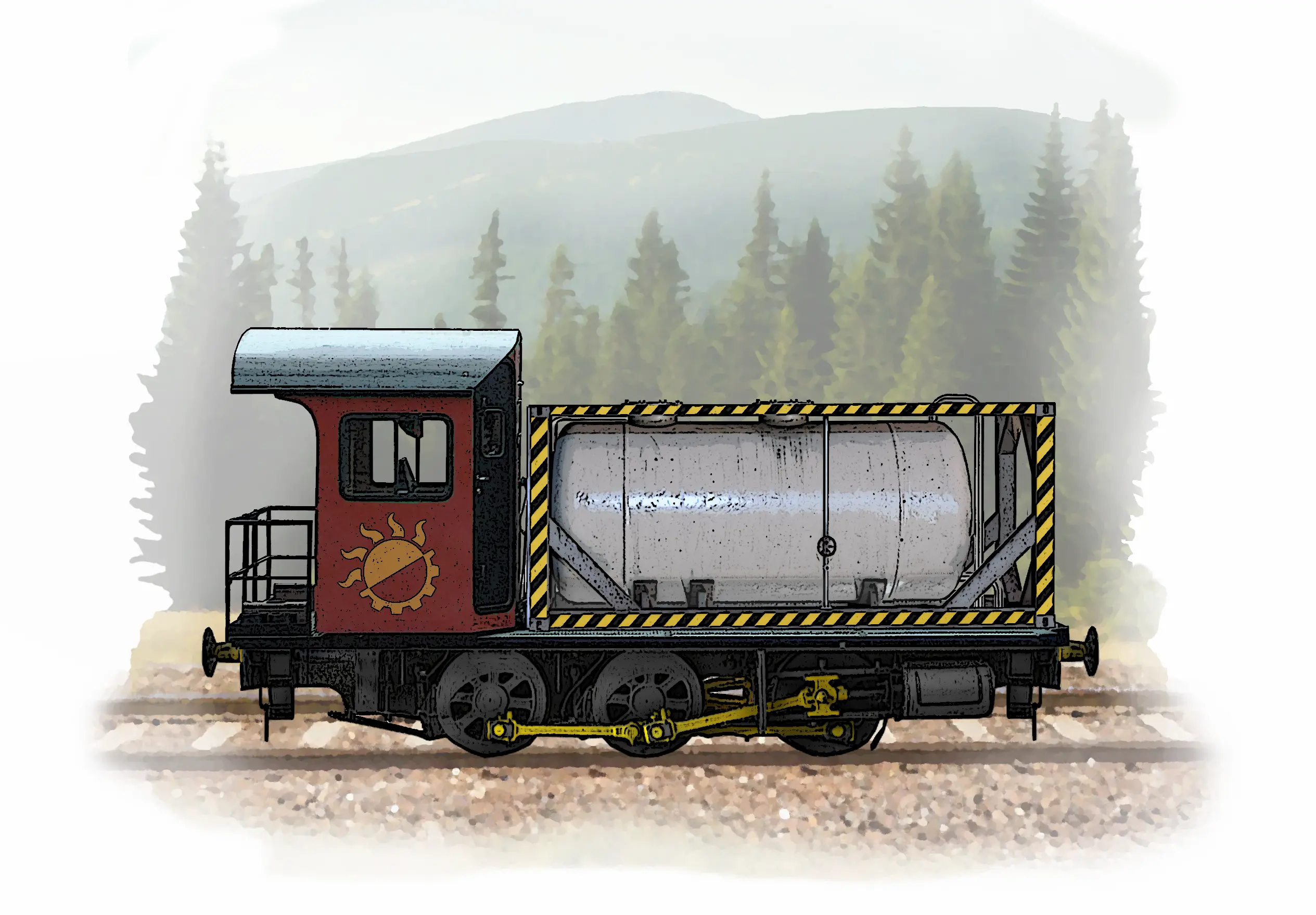
Somethings from further afield to consider: maybe hoisting tanks up onto the circular solar concentrators is a bad idea.
(1) Store and use the NaOH in long, skinny pipes (instead of big tank modules). Then mount them on linear solar concentrators.
(2) Keep the modules, but crane them onto the ground near the solar concentrators and use superheated steam from the concentrators to dry the modules. Less hoisting. The modules already have a piping system in them (isolated from the NaOH) for generating steam, just use it in reverse and open the NaOH chamber so water can escape to the atmosphere as it dries.
Hey Jacob,
Lovely subtle background with soft edges and technical side profile :) This is way beyond what I was expecting. My only artistic complaints would be the odd reflection on the round tank.
Where is the water stored? The engine will need a tank of its own to hold this. The modular units would only hold water temporarily, you would probably want to drain them before lifting them off. Water would also be consumed during the trip from leaks and from adding it to the caustic soda.
How do you imagine your tank being lifted? It looks like it’s currently setup for a shipping-container style ISO twistlock lift (where you hook onto the top 4 corners with some sort of frame hanging from the crane). I was instead imagining a central lifting point and a traditional single-cable crane. Your idea is probably better – the frame is already strongest at the corners and you can potentially couple/uncouple without needing to climb on top.
A really important question would be whether or not we’re using relatively low pressure steam like classical engines (a few atmospheres) or high pressure steam (a few hundred atmospheres). From my vague uneducated understanding of the rankine cycle that steam engines approximately use: higher pressures and temps might allow better efficiency. Your size of tank might only be feasible for lower pressures, at higher pressures you would use multiple tanks with smaller radius (this makes them much stronger, assuming the same wall thickness in both).
I’ll state again that I’m not a train person nor have proper in-depth knowledge of a lot of areas required to properly design such a train, this is all mostly guesswork.
Some random thoughts of my own, much more rushed and poorly drawn than yours:


- Steam-electric turbine rather than steam-piston direct drive. Electric motors hidden in bogeys underneath.
- 2x2x2.5m replaceable modules (arbitrary choice, I think this it really should have been much bigger for a standard gauge rail train)
- All modules secured to bottom frame using shipping-container style ISO twistlock connectors (not shown sorry, out of time and going to be busy tomorrow)
- Three different types of module:
- Silver stripes: high pressure caustic soda boilers (get removed & solar mounted to regenerate)
- Yellow stripes: liquid water storage, pumps and valve. Maybe turbines could go here too?
- Black: Cabin, battery, motor drivers (inverters/choppers/whatever) and controls.
- Bottom frame is four 2x2m frames stuck together. Can be made longer to hold more modules.
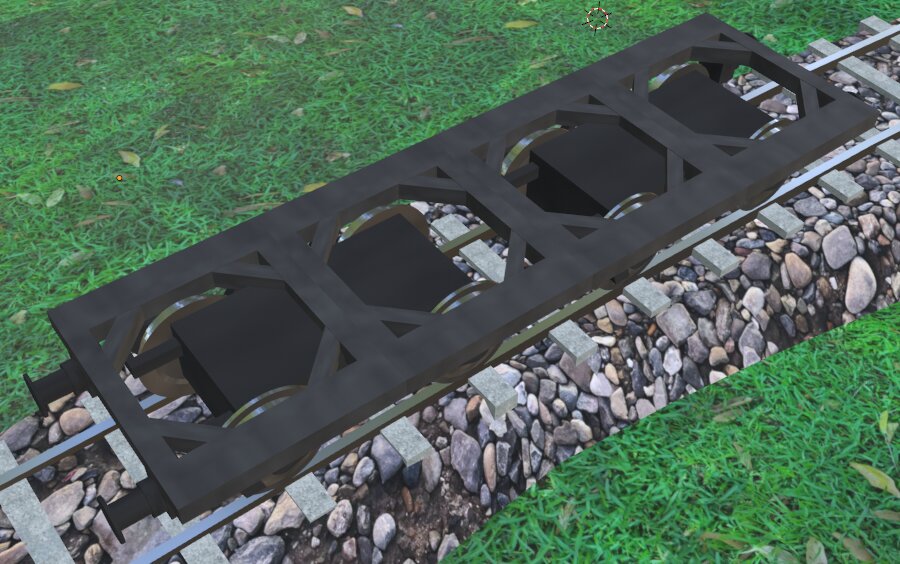
EDIT: Woops, should have made the tanks black rather than shiny silver. They’ll need to be craned onto the solar collectors and then dried, so a darker black body would be better.
This is really cool, thank you for taking the time to model your design, it really helps me picture it, and it seems like there’s some good advantages there in smaller modular units being easier to lift off, and capable of higher pressure.
I copied an original soda locomotive design, where the water boiler is inside the larger tank of caustic soda:
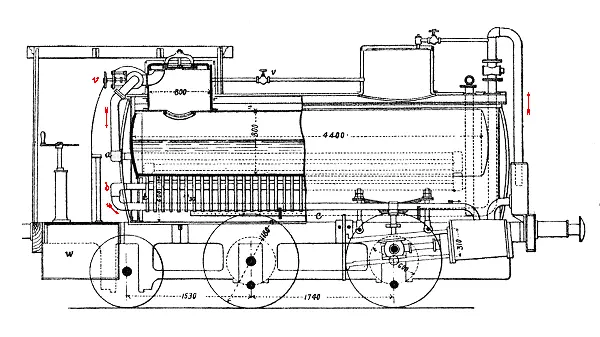
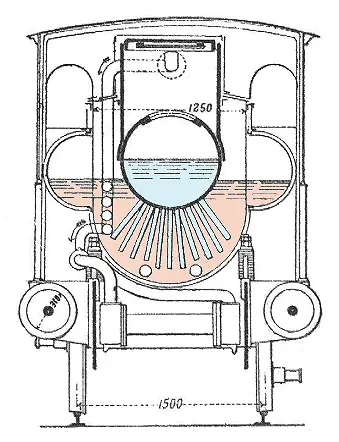
The soda heats the water, releasing steam, which is run in pipes back and forth through the boiling tank and soda tank to further heat it, then driven through the pistons, before being condensed and released into the outer vessel to produce more heat.
I like the idea of pushing the design choices further, mixing in electric motors etc.
The good news is the canisters of soda don’t need to be lifted into the focal point of the solar concentrator. Historically at least it sounds like they often connected them to an external (coal) boiler and pipes superheated steam through to dry them. It seems to me these could use a similar setup with a hookup leading to something like this: https://inhabitat.com/old-fashioned-steam-engines-could-solve-solar-energy-storage-problem/concentrated_solar/
That should lower the labor amount a bit, and make for safer work.
I love this design, and this writeup is awesome! If I do a story featuring these trains this will be a huge help.
I’m definitely doing a scene of these weird cyberpunk-looking steam locomotives. I love the framed tank design, I think they could look a bit like a bigger, clunkier version of these things when they’re closed up:
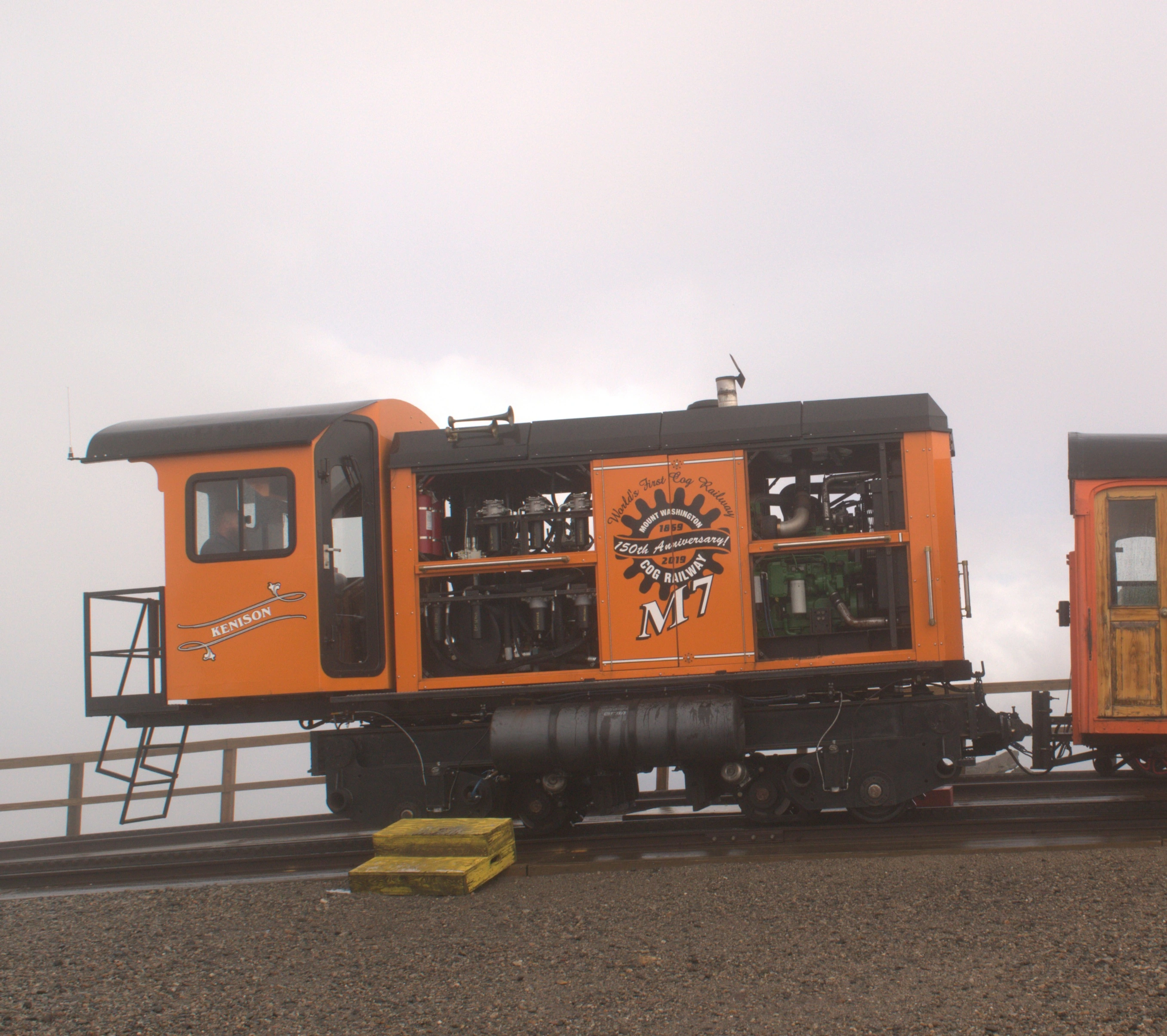
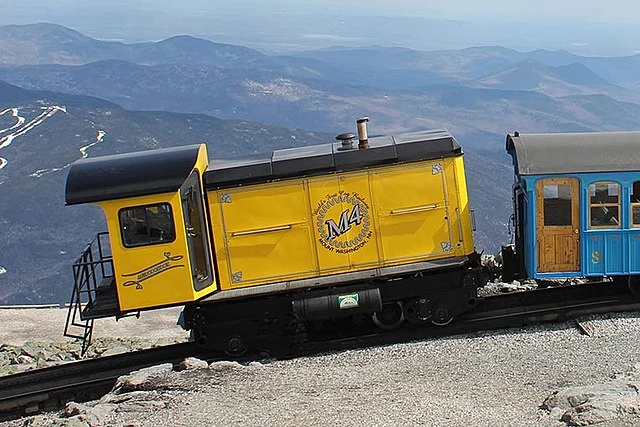
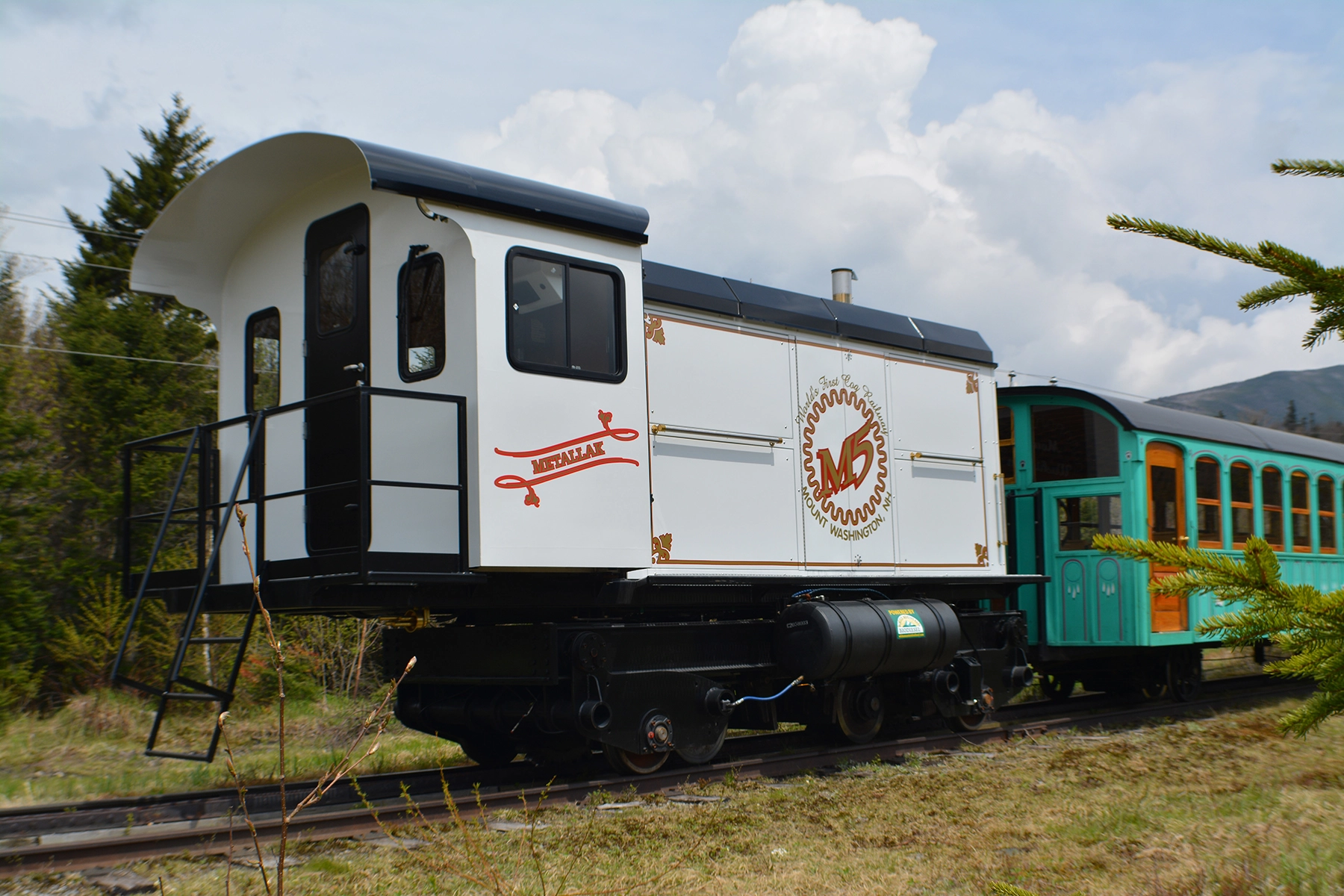
(Or, I suppose, a modern diesel with the cab in front, though that might make lifting the boiler more finicky.)
I’m not sure about the process of lifting them and attaching them, but this is a great start. Maybe they’d use one of those cranes that hangs from the ceiling on rails.
I’ll sketch what I think you’ve described in a bit, to make sure I’ve got the layout right. (I’m gonna have to look up some train designs to make sure the connectors are pointed in sensible directions.) Plus sometimes sharing schematics attracts additional input/corrections which would be cool.
(Or, I suppose, a modern diesel with the cab in front, though that might make lifting the boiler more finicky.)
I’m not sure about the process of lifting them and attaching them, but this is a great start. Maybe they’d use one of those cranes that hangs from the ceiling on rails.
Good catch. Having the boiler in front would make some lifting logistics easier, because you could swing it off in a circular arc rather than needing a crane that can move linearly.
That simple difference might allow smaller, simpler cranes at the various outposts (reserving a full gantry ceiling crane for the workshops or more major stops).
deleted by creator
Lots of discussion on the technology and the pros and cons and likely implications which is super interesting but also think it should be noted how cool taking a concept like this and making some art out of it.
Really nice way of showing other worlds are possible using a technology thread that got closed by the take off of fossil fuels. I think a lot of the future solutions will look like this.
Kudos!
Thank you! Back when I was researching for one of the other postcards (maybe concrete kilns or metal smelting?) I was struck by how often it seemed like new innovations were chosen only for faster product output or because a certain kind of fuel became cheap, and that often they were only more cost effective when the company wasn’t responsible for damages they caused, like pollution.
I think there’s a lot of value in reexamining our past for the other branches in the tech tree, and that there were a lot of technologies out there which were replaced or which never got their chance, but would have been excellent fits for a society with different priorities.
I’ve got the start of a list somewhere, I’ll see if I can find it
Okay I posted this on the wrong comment by mistake. Here’s some more technologies I think have cool potential:
Technology from the late 1800s, early 1900s combined in new solarpunk ways:
I think there’s a lot of value in using energy in the form we receive it to minimize conversion losses, and in recent discussions I’ve been introduced to a couple new ones: solar steam generators which use trough reflectors or ranks of mirrors focused on long vacuum-lined tubes of water to produce steam which can run steam engines/generators. With clever application of steam storage tanks, they can even store excess pressure to keep it going when it’s dark, and to cycle fluid in the system using excess pressure rather than using pumps. This thread had some really cool info on how these went together and the ages of the various components: https://www.reddit.com/r/solarpunk/comments/1b8048e/comment/ktmjpst/?utm_source=share&utm_medium=web2x&context=3
(It also doesn’t have to be used to turn a turbine or generate power/motion. There’s tons of systems in industry that need steam for sterilization etc: https://solarimpulse.com/solutions-explorer/fresnel-solar-steam-generator-1)
Soda locomotives (which I think are covered well enough on this post).
Waterwheels - preferring the kind that didn’t dam up the entire river but instead guided a part of it into a separate channel, where the waterwheel would be mounted. The remaining river would be undisturbed, which is better for the habitat, while still generating free motive power.
vapor-compression systems these were used in old-fashioned refrigerators but modern technology could optimize the design, and they could be matched with any steady motion from a water wheel etc.
I feel like streetcars are always worth mentioning, just because they were such an effective transport system for cities, even using quite early motors, metallurgy, electrical knowhow, and hitting their stride way before modern batteries that could power the vehicle they’re riding in.
I should also mention solar furnaces, and solar ovens which can produce useful heat with fairly simple components (mirrors and a bit of math) which should be useful in any recovering society.
Airships: Despite seeing relatively little use, airship design has advanced tremendously in the last hundred years. Improved materials have allowed them to take more effective shapes, and improved engines, motors, batteries, and computer systems, have made them much easier to control.
Airships could open up some really cool possibilities: while they lack the speed of a jet, they have more capacity, and lower fuel requirements. While they lack the sheer capacity of a container ship, they’re a lot faster and use way less fuel. They can also fly over land, meaning they can reach all kinds of places ships can’t, and cut long detours around continents or transfers between vehicles. What’s more, airships can act as flying cranes, lifting bulky objects like wind turbines or assembled buildings right over obstacles, and to places where roads or trains simply couldn’t carry them.
Other ways to rethink industry:
When I first started trying to depict solarpunk industry, I looked at a way to use solar power to produce the heat needed to manufacture concrete but got overwhelmed trying to work out changes to rotary kilns that would allow for interfacing with a solar furnace, and eventually just did a scene of a solar steelworks. Ironically steel can be smelted just fine using an electric arc furnace, so it’d probably be easier to just use existing industry technologies and hook it up to a green grid. Ideally with reclaimed/recycled inputs.
But it sounds like there probably is a way to cook concrete with a solar furnace, we could model it off of these High Temperature Falling Particle Receivers more links
It sounds like the particles in these designs were just ways to store the heat, like the molten salt in some of the big solar concentrators, but there’s some cool potential for other uses like pouring the raw materials of concrete through to cook it. It’s not too different from a rotary kiln I don’t think.
This would be great because production of concrete accounts for a huge portion of our current society’s energy expenditure/greenhouse gas production.
The kilns used to produce bricks appear to be somewhat compatible with a solar concentrators or solar furnace as well.
Woodgas conversions of internal combustion engines I like these because it emphasizes reuse of existing machinery instead of new manufacturing. It doesn’t require high-tech electronics or rare materials for batteries like electric vehicles. And it’s less practical for the kind of quick trip to the store or daily commute which has shaped our current society. A woodgas vehicle takes awhile (ten to twenty minutes to start up), can’t easily be stored indoors, and because the fire needs to burn down, doesn’t make much sense for short trips. But in a solarpunk society, most folks shouldn’t need a car for that stuff – they’d be walking or taking public transit. So conversions like this would be used for special trips – hauling produce to town, supplies out to forest management camps, research sites, and other remote locations. And perhaps for road trips by campers and other people who might borrow one for an adventure. The wood can be sustainably sourced, using scraps from sawmills, harvested invasive trees, brush, and even dedicated coppiced plantations of especially fast growing trees like paulownia elongata. One of the byproducts of gassification is biochar, which can be tremendously useful in compost, and holds carbon for a comparatively long time. I also think its important to note that while this can be done well, when these vehicles were previously used in massive numbers (during WWII) they led to deforestation. They make sense in small doses, and with some careful management of their inputs.
I got a bunch of good info from this person on reddit
Balanced systems (where waste products are useful):
Anaerobic Biogas Generation from sewage These things process sewage/manure down to where they can be used in agriculture safely, and they capture greenhouse gasses like methane and burn them in generators to produce power.
Passive Greenhouses/Walpinis: These use a bunch of really clever tricks to heat the greenhouses and to maintain temp at night, and in some cases, even during winter. The first time I saw an article about this design I was amazed I’d never considered how poorly standard greenhouses fit our use case up here. I worked on a farm for years growing up and we heated about half of them at least through December. Single or double ply plastic sheets and corrugated white plastic siding nailed to stick frame walls on the ends. Garage doors only on either end. I can’t imagine how much they cost to heat. It’s that one-size-fits-all-just-burn-more-gas approach I think a solarpunk society should reconsider wherever it finds it.
They bank the back (long) wall of the greenhouses with earth, or set them into a south-facing hill, to regulate their temperature using the ground, then they set up heat traps inside like black painted water tanks and water barrels, to absorb sunlight and radiate warmth at night. Another really cool one was storing bins of compost or manure inside, which put out both heat and CO2 as they decompose (making up for the lack of an oil furnace exhausting into the space to boost CO2. This way you capture CO2 before it escapes into the environment, and put it to use). Some farms further boost the heat and CO2 by sheltering animals inside or in a contiguous space with ventilation into the plant area.
Compost windrows there’s a lot of configurations for municipal scale composting, but with the negative pressure airflow system, there’s no reason you couldn’t be pulling the CO2 into the greenhouses or even an algae farm.
Sponge cities capturing storm water, effectively turning floodwater into drinking water they can use by allowing it to filter back down into the aquifer below. Especially when it comes with green areas that improve city life, lower daytime temperatures, and reduce the heat island effect.
Hi sorry for delay I wanted to read and absorb it before replying and my energy levels have been unpredictable.
There’s some cool and great stuff in here.
I got overwhelmed about airships trying to work out if they were viable. You can (as I’m sure you’ve found) find a lot of aeronautical industry talking about how they fundamentally are unlikely to be able to fill any niche for some of the reasons you mention and some technical details which I really struggle to understand. Obviously industry spokespeople who are heavily invested in jet engines are unlikely to give a balanced picture…
I’m skeptical about wood burning vehicles to be honest. I think its more likely we will see (electric) micro mobility plus public transport. There could still be a niche for it but I suspect we would struggle to dedicate much land for wood production for this purpose given all the other demands we have.
I particularly like your focus on industry which often gets shuffled into a difficult-to-handle category and sort of forgotten. I wonder how much concrete demand we can avoid altogether.
Have you heard of solar.lowtechmagazine.com or its companion notechmagazine.com. They are full of this sort of thinking. Also there’s http://www.oldandinteresting.com/default.aspx lots of examples that might inspire!
I absolutely love lowtechmagazine! I haven’t read the others so I’ll check them out, thank you very much!
This is awesome!
Thank you!
Such a cool concept, and a wonderful piece of art. Like your Civil Defense post, your detailed write ups really prod the imagination in the best ways! 😄
A few years ago, I was trying to come up with an interesting fuel source for a vehicle in a story I hoped to write someday, and decided on the concept of a powder that heats up when in contact with water. I never had any knowledge of these trains until reading that same post you linked to, and was pleasantly surprised that something I’d randomly imagined was a real working concept.
Thank you so much! I really appreciate that you and others like the writeups - I love worldbuilding and thinking about these technologies, and the postcards are a fun excuse to do just that part of the writing. Sooner or later I’ll work out a plot and finally write some actual fiction in the setting, but for now this has been a great time.
It’s very cool that you came up with the same technology independently - its always fun when your speculation turns out to be viable
Glad to see that I’m not the only one excited about this concept. Screaming into the void has been very fruitful, I see.
Hey thanks for telling me about it! A lot of my picture ideas come from these kinds of conversations, even if it does take me a long time to get to them. I’m glad I could finally do this one!
This is cool as heck and generally sustainable but it’d be very divisive if any train accidents occur and cause an ecological disaster
That’s a good point! Several tons of sodium hydroxide could make for a nasty spill (granted, freight trains often haul similar stuff in larger quantities anyways, but that would be a likely point of contention). Even swapping the hot caustic slop for dry could be potentially risky (though a properly configured site would probably help contain it in the case of an accident).
Another option which I think might have been more common was to dry the caustic soda right inside the locomotive by pumping the superheated steam into it. This wouldn’t pass that intermittency-tolerance goal, but it could be a nice (low mess) option for when the train shows up and the solar steam generator happens to be cooking away. Someone on the /r/trains subreddit also suggested a design that swapped the filled tanks/boilers, rather than their contents, which could also be cool!
Fun fact, the name Soda Locomotive was likely chosen to remind people of familiar washing soda, rather than the kind of reactive stuff used in the engine. Decent branding for the late 1800s.
This is so lovely and bucolic. I love the thinking that goes into these. I didn’t know about any of this, and it’s really fascinating technology.
The rising “smoke” from the track side building - I imagine that’s the steam cloud coming from drying the caustic soda
Exactly! I liked the visual change of the steam coming from the building rather than the locomotive. They’d be using heat or steam from the solar concentrator to boil off the water






